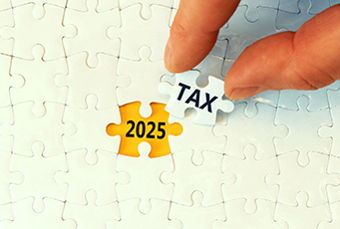Most of us aim for a small refund or tax bill when it comes to tax planning. However, you may occasionally receive a larger-than-expected refund for various reasons. That raises an important question: what should you do when you get a large refund?
Pay Off Debt
If you have any debt, specifically high-interest debt, one of the best uses of your tax refund would be to pay down that debt. One of the most expensive types of debt is a type that many Americans have: credit card debt.
According to Investopedia, the median interest rate on credit cards is 24.37%. If you had $10,000 of credit card debt with an interest rate of 24.37% and you were to make minimum payments equal to the interest owed + 1% of the balance, it would take you almost 30 years to pay off that debt. Additionally, you would pay $19,332 in interest alone. This is almost double the original balance! Applying the proceeds of a large tax refund to your high-interest debt could have a larger impact than you may suspect.
Often, people have more than one source of debt. In addition to credit card debt, an individual may have a mortgage, student loans, or auto loans. Interest rates on these loans are typically much lower than interest rates on credit cards. When deciding which debt to apply a payment towards, it makes sense to start with the highest interest rate loan and work down from there.
Save for College
A college education is often one of the largest expenses of an individual’s life - right next to retirement and buying a home. Planning for college is becoming more and more important by the year.
A good way to spend your tax return could be to contribute those funds to a 529 college savings plan. The money will grow tax-free and can be withdrawn tax-free for qualifying expenses. To improve things, Indiana residents can claim a 20% tax credit for contributions up to $7,500 per household if they contribute to the Indiana CollegeChoice Plan.
Save for Retirement
A contribution to a Roth or Traditional IRA is always a wise decision. Depending on your tax situation, a Traditional or Roth IRA can give you decades of tax-deferred or tax-free growth. The maximum contribution for 2024 is $7,000 for those under 50 and $8,000 for those over 50. The younger you are, the more impactful those contributions will be.
Save for a Rainy Day
If you don’t have any high-cost debt, have saved well for college, and have maxed out your IRA contributions, you can still apply your tax refund effectively. If your emergency fund is low, consider depositing the funds in that account. A good rule of thumb is to have three to six months of living expenses saved in your emergency fund.
If your emergency fund is at an adequate level, consider investing the funds through a brokerage account so your money can work for you.
Treat Yourself!
Have you been thinking about a kitchen remodel or maybe a weekend getaway? Your tax refund could be a good source for some fun! Don’t be afraid to spend that money on yourself. Life is meant to be enjoyed, after all!
Prevention
If you are worried about overpaying and receiving large refunds, you should adjust Form W-4. This document gives your employer details regarding how much to withhold from your paycheck. Additionally, you should review your quarterly estimated payments for adjustments, whether employed or retired.
Summary
Spending your tax return as soon as you get it often seems tempting. However, reviewing your financial picture and using your return strategically can have massive long-term benefits.
Schedule a Consultation
We have helped our clients answer these questions and more. If you want a clear understanding of your financial future, and need help making changes to reach your goals, schedule a consultation and we can get started.





